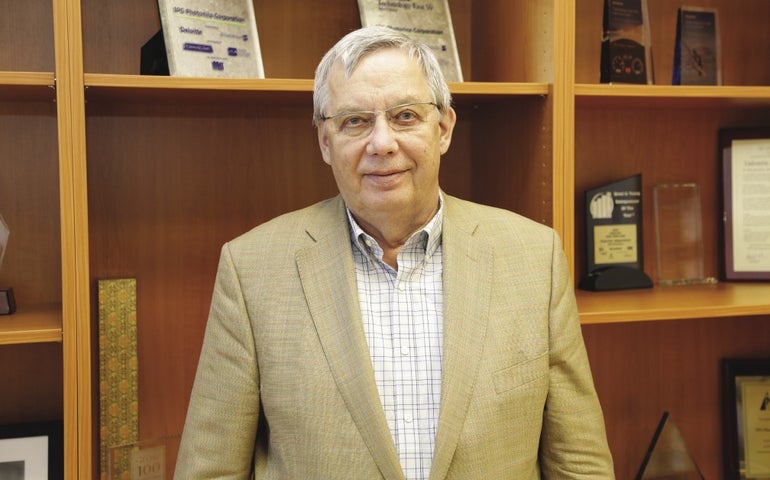IPG Photonics CEO Valentin Gapontsev, fighting to have his name cleared from a U.S. Treasury list of Russian oligarchs, has distanced himself from the Russian government in court filings, saying his company’s growth has largely been the product of his groundbreaking laser technology and not from help from the Russian government.
The company’s growth in Gapontsev’s home country, however, has coincided with a $45 million investment in 2010 from a Russian government-backed business entity in IPG’s Russian subsidiary, according to U.S. Securities and Exchange Commission filings. That investment helped kick-start a massive Russian expansion for IPG from about 100,000 square feet to more than 600,000 square feet in and around Moscow.
As Gapontsev seeks via federal court to have his name cleared and removed from a U.S. Treasury list of Russian oligarchs, the investment from the Russian Corporation of Nanotechnologies has not been referenced in court documents by Treasury lawyers or Gapontsev’s lawyers.
The investment, IPG said, should be viewed outside of the context of the oligarch-related lawsuit.
“Dr. Gapontsev and IPG argue in the lawsuit that he does not belong on the list because he generated his wealth from the fiber laser technology that he pioneered and commercialized at IPG Photonics, not from misappropriation of Russian government assets at low values in insider deals as oligarchs are typically defined,” the company said Monday.
Less than 5 percent of its sales were in Russia, the company added.
Rusnano, established in 2007 to invest in the country’s nanotechnology industry, purchased 12% of IPG subsidiary NTO IRE-Polus in 2010 for $25 million. It bought another 10% stake for $20 million in June 2011.
In a statement to the Worcester Business Journal, IPG said its affiliation with the Russian nanotechnology group, known as Rusnano, ended in 2012.
The IPG subsidiary had a so-called call option starting in 2013 to buy back the minority stake from Rusnano at a predetermined value, the company said, but the two sides negotiated a deal to exercise that call option in 2012 for IPG to reacquire those shares for $55 million.
The proceeds from Rusnano’s investment, IPG said, were used to accelerate NTO IRE-Polus’ capital investments at its Russian facility.
Still, the company said the dual Russia-U.S. citizen Gapontsev was well on his way to billionaire status before the investment from the Russian government. Gapontsev started the company in Russia in 1990, formed a German subsidiary in 1994 and then moved the company to Oxford in 2001.
The company had an initial public offering on NASDAQ in 2006, and revenue grew nearly every year from about $90 million to $1.46 billion in 2018.
At the time of the Rusnano investment in 2010, the company had just $299 million in revenue.
According to the company’s SEC filings, the company in 2010 controlled 104,000 square feet of manufacturing and administrative space in Fryazino, a suburb of Moscow.
It was a year after the initial investment in 2011 that Gapontsev was awarded a Russian Federation National Award and met Russian President Vladimir Putin for the only time, the executive and company have said in court filings.
The company’s presence in Russia increased every year and now the company maintains about 552,000 square feet in Fryazino and 51,500 square feet in Moscow.
“The investment by Rusnano helped the expansion of NTO-IRE-Polus’s facility in Russia, but it would not be correct to attribute the expansion from 100,000 to 600,000 square feet to the Rusnano investment,” the company said.
According to the company’s most recent annual report in 2018, Russia made up the company’s second largest employee base with 1,740 employees.
IPG still has more employees in the U.S., 2,340, than in any other country. The company still maintains the majority of its operations in the U.S., including its headquarters in Oxford significant facilities in Marlborough, Webster and Iowa.

